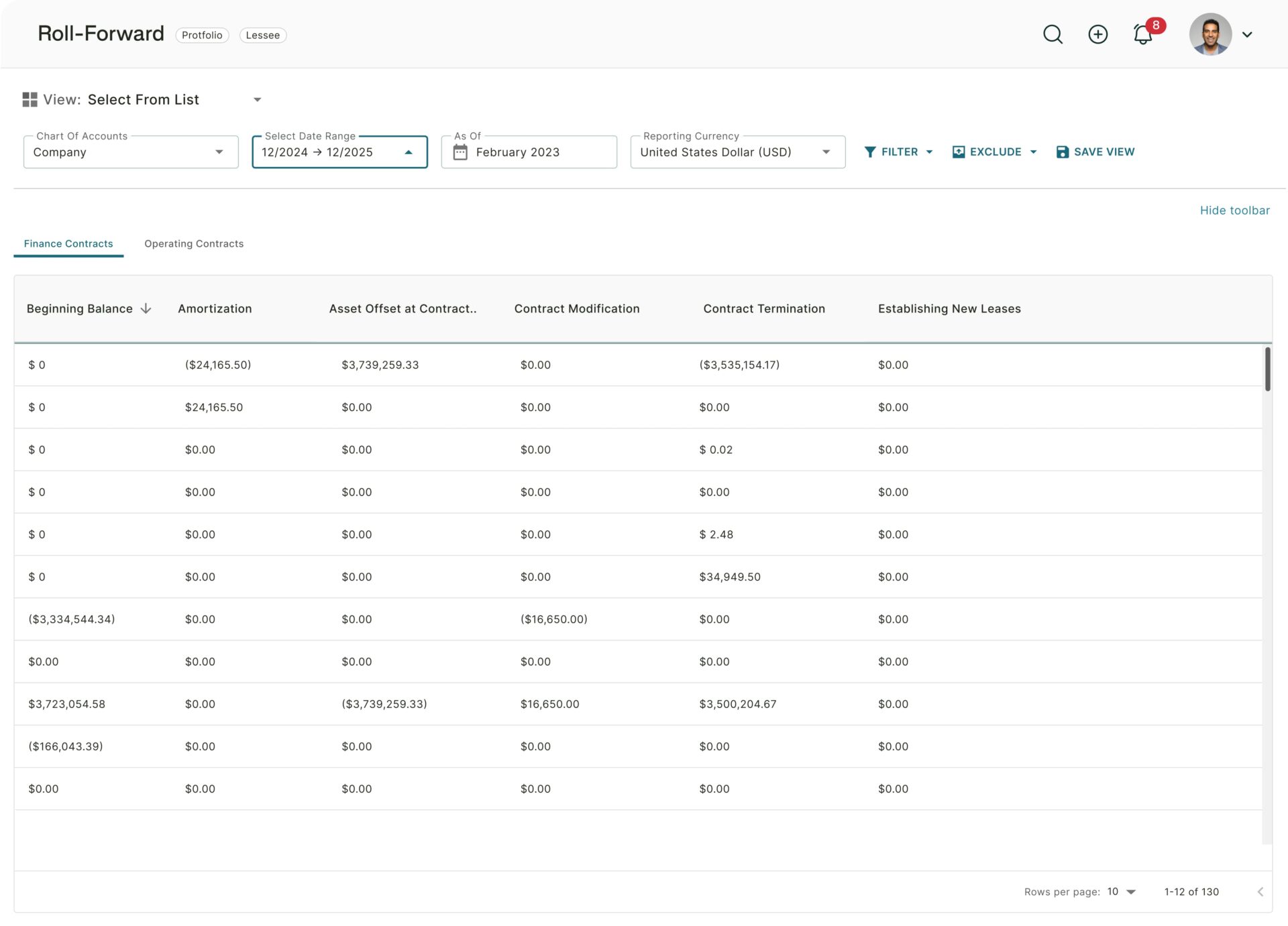In 2006, the Financial Accounting Standards Board (FASB) – which deals with accounting standards in the U.S. – and the London-based International Accounting Standards Board (IASB) which deals with accounting standards in many other countries, started a joint effort to streamline the way that leases are accounted for.
The result of this collaboration is two standards that are similar in many ways, albeit with some key differences: ASC 842 and IFRS 16.
In a nutshell, both standards ensure that leases cannot be used to keep items off the balance sheet. ASC 842 and IFRS 16 define what a lease is, how leases should be accounted for (for example by creating a lease asset and a lease liability on the balance sheet), measurement and disclosure guidelines.
ASC 842 especially has been in the news of late, as the implementation deadline has arrived and it requires relatively drastic changes for all U.S. companies that have leases on their books.
In this article, we’ll look at the differences between these two standards and in doing so gain a deeper understanding of how to ensure smoother and better compliance more efficiently.
The effect of IFRS and GAAP on lessee requirements
The primary effect of the lessees’ requirements under both IFRS and GAAP is to measure lease asset and lease liability on the balance sheet for operating leases. Whereas in the past operating leases in particular could be expensed on a straight-line basis through the income statement, these standards ensure that this method is no longer available.
The effects of this change will include:
- Changes to key financial ratios, especially the Return-on-Asset (ROA) ratio
- Impact on debt covenants, and the potential triggering of specific conditions
- Operating leases won’t just be a table of future payments in Financial Statement footnotes, but rather a fully-fledged asset and liability on the face of the balance sheet
- New disclosure requirements
- The need to go over all contracts and identify lease details including potential embedded leases
- The need to stay on top of changes in contracts – which can impact the measurement and accounting treatment of leases
- Updated journal and audit requirements
Ensuring that you’re ready for ASC 842 implementation requires some planning. We recommend that you:
- Familiarize yourself with the new standard and its implications
- Ensure you’re properly prepared from an accounting software perspective (for most organizations Excel probably won’t cut it)
- Understand how new technologies can simplify the process – watch our recent webinar in which we discussed this topic together with Deloitte
- Re-examine existing and upcoming leases and contracts under the definitions of the new ASC 842 standard
- Acquaint yourself with in-depth and helpful publications by accounting professionals, such as those from Deloitte and PwC
For a full guide to implementing ASC 842, download our handy Guide.
Challenges of complying with both IFRS and GAAP requirements
As touched on previously, there are a number of challenges when it comes to complying with both IFRS 16 and ASC 842. Chief among these in managing the added complexity that these standards introduce.
For example, almost any contract can contain a lease element, even if this is not explicitly stated. Another challenge is the changing nature of many leases; employee vehicles for example are just one area of constant flux. Another is the renegotiation of real estate contracts such as office leases brought about by the COVID-19 pandemic.
For an entity with many leases, ongoing compliance with IFRS 16 and ASC 842 can quickly get overwhelming. Given the requirements of these standards, it’s worth evaluating whether you should implement lease accounting software.
IFRS 16 vs. ASC 842: differences and considerations:
Let’s now dive into the key differences between these two accounting standards.
1. Effective date
The ASC 842 effective date for non-public companies is for periods subsequent to December 15, 2021 – though it is already in effect for public companies.
IFRS 16 is effective for periods beginning on or after January 1, 2019.
2. Transition approach and comparatives
IFRS 16 provides a choice: either restate comparatives under the “retrospective approach”; or without restating comparatives under the “modified retrospective approach”.
ASC 842 only allows a modified retrospective approach. However, ASC 842 provides a choice of the transition date. Entities can elect whether the date of initial application is the beginning of the earliest period presented or the beginning of the period of adoption.
There are also some differences relating to initial application measurement of the right of use asset and transition practical expedients.
3. Leases recognized on the balance sheet
The major difference here is that for IFRS 16, an exemption is offered for “low-value” leases (under $5,000 when new, even if they are material in aggregate). No such exemption is available under ASC 842.
4. Lease classification
Here is another big difference between IFRS 16 and ASC 842 for lessees: unlike ASC 842, IFRS 16 does not separate finance and operating leases – rather all leases (except for low-value and short term leases) are considered finance leases, as a single lease accounting model for lessees.
Under ASC 842 lessee operating contracts are expensed the same way they always have — as a single-line item operating expense, and as operating activity in the statement of cash flows.
While under IFRS 16 all lessee contracts (except for low-value and short term leases) are expensed to interest expense and depreciation expense, increasing EBITDA; and the lease payments are split into principal payments presented in financing activities in the statement of cash flows, and interest payments that are presented either in operating activities or financing activities in the statement of cash flows in accordance with IAS 7, Statement of Cash Flows.
For lessors ASC 842 separates contracts into three categories: Operating lease, Sales-type lease, and Direct financing lease. IFRS 16 separates lessor contracts into two categories: Operating lease, and Finance lease.
5. Remeasurement
Under IFRS 16, subsequent changes to lease payments that vary with an index or rate require a remeasurement of the lease liability with corresponding charge to right of use asset.
Under ASC 842, such changes do not necessitate a remeasurement (unless a triggering event occurs), rather the linking differences are recognized when incurred as “variable payments”. So the liability under IFRS could grow significantly than under ASC 842. Dual reporters will have to separately track the accounting under each accounting standard.
6. Sale and leaseback transactions
IFRS 16 is a lot more definitive in this aspect. The key test is whether there is a substantive option to repurchase the asset in question. If this is the case, the transfer is not recognized as a sale. IFRS 16 limits the recognition of gains from sale and leaseback transactions.
Under ASC 842, this may be considered a sale in certain circumstances, and seller-lessee would recognize the full gain from a sale and leaseback transaction that qualifies as a sale.
7. Subleases
Under ASC 842, a sublessor classifies a sublease by references the underlying asset; while in IFRS 16, the sublessor generally classifies a sublease by references the right-of-use asset.
Therefore there can be cases where a sublease is classified as an operating lease under ASC 842 and as a finance lease under IFRS 16.
Seamless compliance with ASC 842 and IFRS 16
No matter which set of standards your organization has to comply with, the general principles and the challenges faced are very similar. Despite their differences, ASC 842 and IFRS 16 require a consistent approach from the side of finance heads and their departments, audit teams, analysts and other interested parties.
As we’ve seen, compliance with these standards can be challenging. Happily, today lease accounting software can be used to ensure compliance, reduce errors, slash the time it takes to manage leases, and automate the entire process.
Interested in learning more? Get in touch or request a demo.





